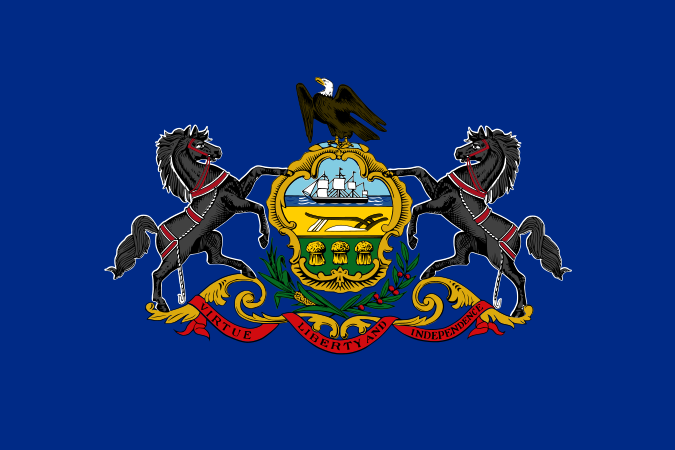We found this during genealogical research. It shows the evolution of Pennsylvania counties from the founding of Pennsylvania in 1682 until the present county divisions that has remained in place since 1930. It also shows the claims Virginia, Maryland and Connecticut made over Pennsylvania. The border for Maryland was eventually settled by the Mason-Dixon survey, and settlers often fought low-level wars with settlers from Virginia and Connecticut over their claims. Connecticut claims were strong enough that many Revolutionary War service records for soldiers from what is now Western Pennsylvania are to be found with the State of Connecticut.
Speaking of the Mason-Dixon survey, here’s an interesting fact:
It was not the demarcation line for the legality of slavery, however, since Delaware, a slave state, falls north and east of the boundary. Also lying north and east of the boundary was New Jersey where, in reality, slavery existed, in limited numbers, until 1865. It was not until 1846 that New Jersey abolished slavery, but it qualified it by redefining former slaves as apprentices who were “apprenticed for life” to their masters. Slavery did not truly end in the state until it was ended nationally in 1865 after the American Civil War and passage of the Thirteenth Amendment to the US Constitution.
There was technically some measure of slavery in Pennsylvania until 1847, when slavery was completely outlawed. Pennsylvania passed its Gradual Emancipation Act in 1780, which didn’t abolish slavery, but which prohibited further importation of slaves into the commonwealth, and made any children of slaves freeborn. This was actually the model used by most of the northern states, but New Jersey was one of the last states to begin gradual emancipation, only starting in 1804, 24 years after Pennsylvania started the trend. The only state to do immediate emancipation was Massachusetts in 1783, and that was through a court decision. So it’s probably not entirely fair to single out New Jersey in this example.


A lot of these things are interesting studies in the influence of economics overpowering ideology or state chauvinism.
Much of southern New Jersey that was roughly south of the Mason-Dixon line sympathized with the Confederacy and traded with it to the extent that they could during the Civil War, just as they had prior to the war. Conversely, Chincoteague Island and similar coastal communities in Virginia sold much of their seafood products to the North, and sympathized with the Union, and continued to trade with it, to the extent that they could. Also, slavery was not relevant to their economy. I’m told that Chincoteague went through the motions of setting up a military company for the Confederacy, but in four years of war never managed to find transportation for it to reach the mainland.
I sometimes wonder whether their were state “attitudes” that went back farther than that, that could have evolved to state differences today. For example, I believe it was primarily New Jersey state militias that answered George Washington’s call to be nationalized, to go crush Pennsylvania’s Whiskey Rebels in 1794. They reportedly went at it with some enthusiasm.
OTOH, the “American Colonization Society” – which provided passage to Africa – was founded in New Jersey.
But the Wikipedia entry for Liberia does not mention something I have heard elsewhere. South Carolina also had a “phase out” in place for slaves, and pondering the result of having thousands of freed slaves and their children, funds raised privately bought the land now compromising Liberia and established the English-speaking government. May be apocryphal, may not.
Another interesting fact is that the three counties of the present State of Delaware were leased by Pennsylvania and the PA state legislature “ruled” those counties. The Delaware counties sent reps to the PA legislature. To make it fair, some sessions of the Pa legislature were actually held in Delaware. Then the PA reps complained and they eliminated those sessions and held all of the legislative sessions in Philly again. Eventually, the Delaware reps complained so much bout having to travel to Philly that they were eventually granted home rule. Delaware became independent of PA at the time of the Declaration of Independence, which eliminated the royal and proprietary colonial governments, including in PA. Thus, the lease was nullified.
A more detailed history of emancipation in the North can be found in my book Black Demographic Data, 1790-1860: A Sourcebook.
Dang, as a Connecticut Yankee in William Penn’s Court, I found this totally fascinating.
http://en.wikipedia.org/wiki/Pennamite-Yankee_War
I never knew that Connecticut had a claim, nor that Pennsylvania and Connecticut essentially had a small skirmish war over Pennsylvania territory.
Thank you for enlightening me.
You may need to go to war with yourself now.